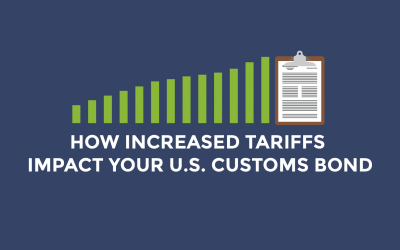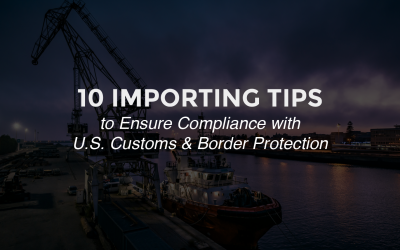Developments in national security protocol have introduced a host of requirements importers must fulfill. One of these requirements is Importer Security Filing (ISF) and Additional Carrier Requirements, also known as 10+2.
Implemented on January 26, 2009, the goal of ISF is to keep US borders as safe and secure as possible while still facilitating trade. Although ISF filing requirements are already a few years old, they have yet to become part of every importer’s shipping lexicon.
The filing requirements include information regarding the seller and the buyer, the importer number, the consignee number, the manufacturer, the ship-to party, the country of origin, and the Harmonized Tariff Schedule (HTS) classification number. Filing this information is mandatory for any shipment landing in a US ocean port, and must be completed at least 24 hours prior to the vessel’s departure with its cargo. Information about the container stuffing location and the consolidator is required as well, but instead of being required at least 24 hours prior to lading, this data is required at least 24 hours prior to the ship’s arrival at a US port. Despite this extended timeframe, this is most commonly part of an initial filing.
The ISF importer – the party responsible for the goods showing up by sea in a US port – is responsible for making sure ISF filings are in place.
Although US Customs and Border Protection enacted a leniency policy regarding these rules, it officially ended January 26, 2010. Failure to adhere to these standards can result in a $5,000 per infraction fee. Non-adherence could manifest itself in the form of a late (untimely), inaccurate, or incomplete filing. Cargo that makes it to a US port without ISF filing in place is subject to being held by Customs, and if an importer unloads the cargo without permission, the cargo is subject to seizure. At this time, US Customs is not issuing any fines, though they are fully authorized to do so, and will likely begin fining non-compliant parties any day now.
No importer wants their shipments to be subject to any of these penalties. Mistakes leading to these fees are not only financially costly, but precious time is also lost in the interim. Maintaining a solid grasp on ISF filing is absolutely vital to having a strong, compliant supply chain. Taking time to explore and get educated about ISF filing will protect importers from falling into non-compliance and will actually save time in the long run.
US Customs and Border Protection provides some very useful resources regarding ISF (10+2) on their website. Some of the best quick-references regarding Importer Security Filing we’ve found so far include are on US Customs and Border Protection’s website. It’s always best to get information from the agency itself, in order to eliminate the possibility of misinterpretation or outdated information.






![[Webinar] TRG Talks U.S. Customs Bonds with Star USA](https://traderiskguaranty.com/trgpeak/wp-content/uploads/2024/07/trg-star-webinar-customs-bonds-tariffs-400x250.png)
